“[Kevin] Baldeosingh […] uncritically regurgitates the defunct racist hypothesis that ‘darker-skinned people’ are judged less intelligent and ‘more primitive’ than ‘fairer-skinned people’.
“[…] During the first century of this era, Ethiopians were the majority in the town of Barygasa (now Baruch) in western India. By the time of the Mughal Empire, these ‘darker-skinned’ Africans, then known as Habshis and Sidis, loomed even larger in the political and intellectual life of Hindu and Muslim India.
“[…] One of the most famous, Malik Ambar, became de facto Sultan of Ahmadnagar in the Deccan…”
Dr Claudius Fergus hits back at Kevin Baldeosingh’s response to his initial column on race and history in the following Letter to the Editor:
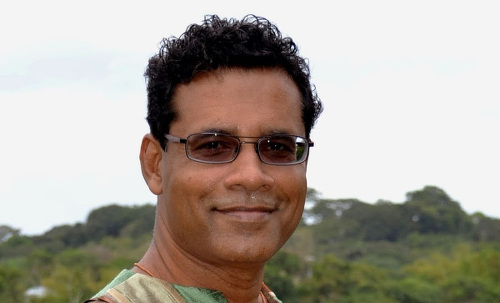
Kevin Baldeosingh’s Wired868 article of 23 December is, in the words of Cheikh Anta Diop, a performance in “intellectual acrobatics.” Apparently, Baldeosingh’s primary objective was to demonstrate that he dabbles in history more than Dool Hanomansingh; his critique, however, is little more than scatter-brained intellectualism, designed to confuse rather than enlighten. His article uncritically regurgitates the defunct racist hypothesis that “darker-skinned people” are judged less intelligent and “more primitive” than “fairer-skinned people.”
A key objective in my previous article was to reject the intellectually untenable construct of Indians as “brown” and Africans as “black” and, more so, the implicitly racist assumption of the superiority of white-over-brown-over-black, the validation of which has undermined our best efforts at building a nation state from the morass of the colonial legacy of ethnic separatism in T&T.
Intentional or not, Baldeosingh seems determined to validate these absurd racist ideas. Despite his rebuttal, there are indeed millions of Indians of the same complexion as Hausa, Yoruba, Mandinga, Fula, Wolof, Bambara, Ashanti, and other ethnicities of West Africa. Just as well, there are also millions of native Africans with the same melanin density as Baldeosingh. I welcome informed criticism, not ‘balderdash.’
Ironically, despite his uncomplimentary posturing and disingenuous misapplication of historical quotes, Baldeosingh unwittingly agrees with almost all of my arguments or is unable to rebut them. He mostly skirts the issues with spin and sarcasm, for which he is well known in the world of media. A few examples should suffice to expose these flaws.

He cites Muslim fortresses as implicit evidence of conquest but none of the locations that he includes is south of the Sahara. Furthermore, his citation of John Parker reinforces my point. An irrelevant citation from Snowden is used to refute Budge; even so, new research has also rejected many aspects of Snowden’s claims. No serious scholar would assert that the term “Africa… was always synonymous with the modern terminology of words like ‘Negro’ and ‘black.’” I certainly did not make that claim, as Baldeosingh mischievously implies.
Baldeosingh is clearly trying to obfuscate the reader who might be ignorant of the evolution of Europe-informed historical geography and ethnography of Africa. Roman imperialists first coined the term “Africa” to supersede the name Carthage (now Tunisia); Renaissance Europeans redeployed “Africa” to the whole continent.
“Ethiopia” was a shifting concept, much more so than Africa. Notwithstanding Baldeosingh’s discomfort, the term was indeed relevant to a large swathe of territory extending into south Asia to cover all the regions with high concentrations of people with “burnt faces” (aethiops), which really meant “people kissed by the sun.”
Although the Axumites had appropriated the term Ethiopia after their conquest of Kush in the fourth century, Islamic geographers avoided the term, substituting it with al-Habasha (Abyssinia) and Bilad as-Sudan, the latter coinciding geographically with the Mande Muslim empires of Mali and Songhai.
Europeans were totally dependent on Islamic geography for knowledge of the interior of Africa until the nineteenth century, but kept the term Ethiopia alive because of Scripture, which they adapted to eighteenth-century human taxonomy as Homo Aethiopicus (Ethiopian Man).
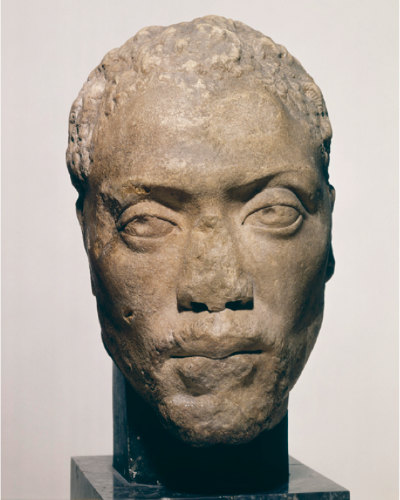
From that time also, free Africans in the Caribbean and the USA were embracing Ethiopia as a pan-African identity. European cartographers of the 1840s showed Ethiopia as the vast hinterland extending from 3 degrees North. Latitude to the Cape Colony in southern Africa.
Up to that time it was then commonly accepted by Arabs and Europeans that the former Axumite Empire was Abyssinia. Following the victory of Menelik ll over the Italian army in 1896, the victors re-appropriated and formalised the term Ethiopia as a symbol of their independence in the era of the European scramble for the continent.
The English appropriation of “Negro” as an ethnographic term has no meaning outside of the context of the transatlantic slave trade. Before the sixteenth century, Englishmen largely referred to dark-skinned Africans as Moors or Blackamoors. It is no coincidence that the first use of the term “Negro” in English to describe Africans was in 1555—the same year that John Lok returned from West Africa with five captured Africans. English trafficking in Africans continued in earnest with John Hawkins from 1562. The translation of “Ethiopian” in ancient texts as “Negro” in English is often anachronistic.
Interestingly, the English equation of Negro = slave sometimes applied to Chinese and south Asians. English historian, Peter Fryer (Staying Power), in an explanatory note to a commentary on English pageant performers in mid-seventeenth century, states: “It should be borne in mind that the word Negro in this period could mean an Asian as well as an African (or person of African descent). Sometimes a performer is identified as one or the other, or the costume provides a clue.”
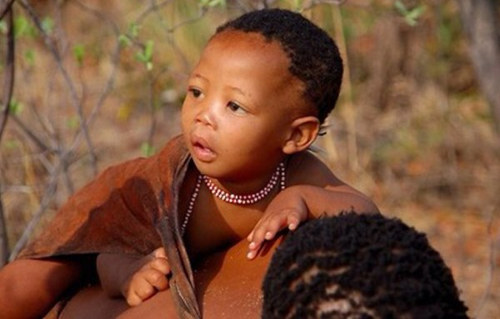
Some scholars believe all races came from this tribe.
The English mostly trafficked out of West African seaports. In time, the region that supplied them with captives was called Guinea. To the English, Guineans were “negroes”; “negroes” were slaves. By the time England became the world’s leading trafficker in Africans in the early eighteenth century, their slavers were trafficking more and more in people from the collapsed Songhai Empire which roughly equated with Bilad as-Sudan.
Not surprisingly, their cartographers began to superimpose “Negroland” onto the Arabs’ Bilad as-Sudan. This transliteration led to a blurring of distinctions between the peoples of the Savannah and the peoples of the Forest—all were now “negroes,” that is, potential slaves.
The contextualising of “Negro” with transatlantic human trafficking becomes more evident with the curious exclusion from the “Negro” label of the so-called Bantus of East Africa; so too, the Khoisan of southernmost Africa. This externally imposed racist taxonomy brainwashed some African peoples into thinking they were of different races—one of the most tragic consequences was the Rwanda genocide.
Baldeosingh’s claim that Arab conquerors met only “fairer-skinned people” in Southeast Asia and “darker-skinned people” in Africa is pandering to Anglo-American racist diatribe, notwithstanding his citation of the “eminent” Orientalist, Bernard Lewis.
Didn’t the Arab invaders encounter the Copts of Egypt, the Libyans (Tamahu) and the Berbers of the Maghreb? Are these also Baldeosingh’s “darker-skinned people?”
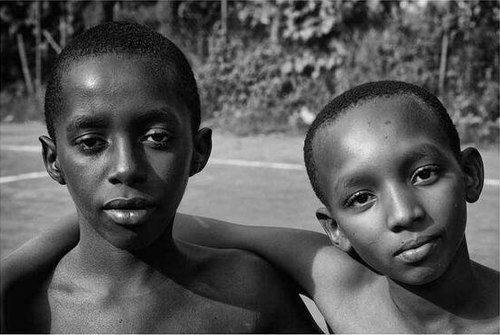
Interestingly, when the Arabs launched their first invasion of truly “darker-skinned people” of Nubia (south of Egypt), they suffered their first decisive defeat. Chancellor Williams (The Destruction of Black Civilizations) writes, “An Arab historian of the period felt compelled to admit it was the most devastating defeat ever suffered by an Arab army.”
So much for Baldeosingh’s implicit presumption of the superiority of brown over black!
Baldeosingh did not advance what it was that made poet Malinius’ evidence superior to Strabo’s, Pliny’s, Herodotus’ or other ancient sources that Budge relied on. Poets are well known for embellishing historical facts with fantasy. I prefer to rely on geographers, ethnographers, travellers and historians.
Sociologist St Clair Drake (Black Folk Here and There) affirms that when the first wave of Arab jihadists reached Pakistan during the seventh century—melanin demographics still supported the Ethiopian nexus in many parts.
Drake writes, “Here in this peripheral [to India] area, Blacks lived in a unique type of Diaspora, a place where the somatic norm image of many of the indigenous peoples were similar to that of the Negro Africans, except for straight hair.”
Indeed, up to late nineteenth century, linguist Augustus Keane (Ethnology) mentions the “Ethiopic, Negro, or Black Division” in his human taxonomy, dividing the group into “A. Western (African) Section” and “B. Eastern (Oceanic) Section,” the latter including the people of the Andaman islands of India.
In his well-illustrated book, Sex and Race, JA Rogers avers, “the earliest East Indians were ‘the Negritos’… The next were the pre-Dravidians, another Negro type of taller build; and then the Dravidian.”
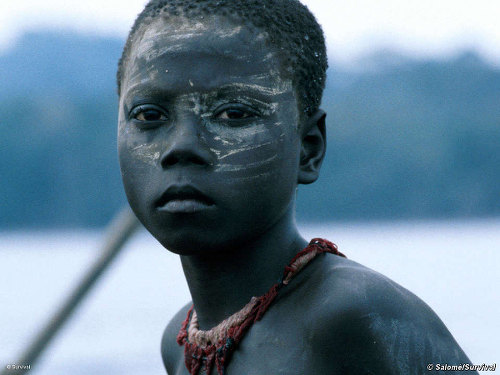
(Copyright Survival International)
Those so-called Negritos may just as well be called pre-Indians, since they predate the peoples to whom the term India was first applied. Remnants of “Negritos” are still to be found in India; the best-known survivors are the Jarawa, who are mostly restricted to the Andaman Islands.
So, where do you draw the line with the Ethiopian type? Were the ancient geographers really wrong in acknowledging an Ethiopic India?
During the first century of this era, Ethiopians were the majority in the town of Barygasa (now Baruch) in western India. By the time of the Mughal Empire, these “darker-skinned” Africans, then known as Habshis and Sidis, loomed even larger in the political and intellectual life of Hindu and Muslim India. Baldeosingh should “equate the two facts” that he expounded with the geography of caste and primitivism in the subcontinent under Muslim rulers.
Undoubtedly, as he affirms, “after the conquest there were changes;” among those changes was the new reality that Indians had to contend with top-level administration and naval dominance of Sidis. One of the most famous, Malik Ambar, became de facto Sultan of Ahmadnagar in the Deccan.
Ambar was a patron of Hindu scholars and appointed Brahmins as officials and tax collectors—so much for Baldeosingh’s “inferior darker-skinned” people in India.
Arguably the greatest Muslim traveller of imperial Islamic times, Ibn Battuta, testified in the 14th century that Sidi seamen sailed regularly between Africa and India; with their main base in Janjira, they protected travellers such as Battuta; they would later protect Indian Muslims on Hajj and European ships against piracy; they also assisted in the resurgence of Hindu power in the Deccan.

Does Jean-Jacques Dessalines’ so-called massacre of military restorers of slavery take away anything from the epochal achievement in advancing human freedom that the Haitian Revolution represents and that Marx acknowledged? These same black “primitive” and “less advanced darker-skinned people”—as Baldeosingh labels them—defeated the French and the English and liberated Santo Domingo from Spanish rule.
Baldeosingh’s attempt to take down Dessalines betrays a lack of understanding of Caribbean history and a disdain for authentic Caribbean heroes. Had Dessalines failed against Napoleon Bonaparte’s forces, slavery would have been restored in Haiti, and emancipation delayed in every colonial empire. It was a free Haiti that assisted Simon Bolivar in delivering South America from Spanish colonialism.
Since Baldeosingh cites CLR James conveniently, let me also cite him from the same text, The Black Jacobins. As for the mischief implicit in Baldeosingh’s targeting of Dessalines, James affirms: “From their masters they had known rape, torture, degradation, and, at the slightest provocation, death. They returned in kind… And yet they were surprisingly moderate, then and afterwards, far more humane than their masters had been or would ever be to them.”
Baldeosingh’s prejudice is implicit in citing Dessalines’ massacre without recognising that it was retaliation for an earlier massacre of blacks by French troops under orders of General Charles Leclerc, sent by Napoleon to restore slavery. After more than 300 pages of denying that the revolution was a race war, James finally concedes that Leclerc deliberately drowned over 1,000 Africans “in one stroke” in the harbour of Le Cap—thus, it was he who “started the race war.”

General Donatien-Marie-Joseph Rochambeau, who assumed command after Leclerc’s death, also agreed to carry on with the genocide. James graphically recounts: “Leclerc had proposed a war of extermination, and Rochambeau waged it… by attempting to exterminate blacks and Mulattoes as well.”
That was 1802; Dessalines’ desperate counter-offensive to save the revolution was in 1805.
To conclude, if the proverbial pot calls out the “kettle”, it is simply trying to raise the kettle’s consciousness of the fact that the fire has done the same to both of them—but some kettles need a karmic dispensation (samsara) to comprehend this wisdom. My professional track record speaks for itself.
But since Baldeosingh obviously thinks otherwise, I invite him to enquire of any of those who have been my students over the decades to try to find a single piece of evidence of prejudice toward them, overt or perceived.
I suggest that he should then do the same for his own career; the findings might shock him.
Claudius Fergus is a retired Senior Lecturer in the Department of History at UWI’s St Augustine Campus who specialises in the abolition of British colonial slavery and its transatlantic slave trade.
His major work on the subject is Revolutionary Emancipation: Slavery and Abolitionism in the British West Indies (2013). He has other extensive publications in peer-reviewed journals and edited books.
 Wired868 Wired868 for smart sport news and opinion
Wired868 Wired868 for smart sport news and opinion
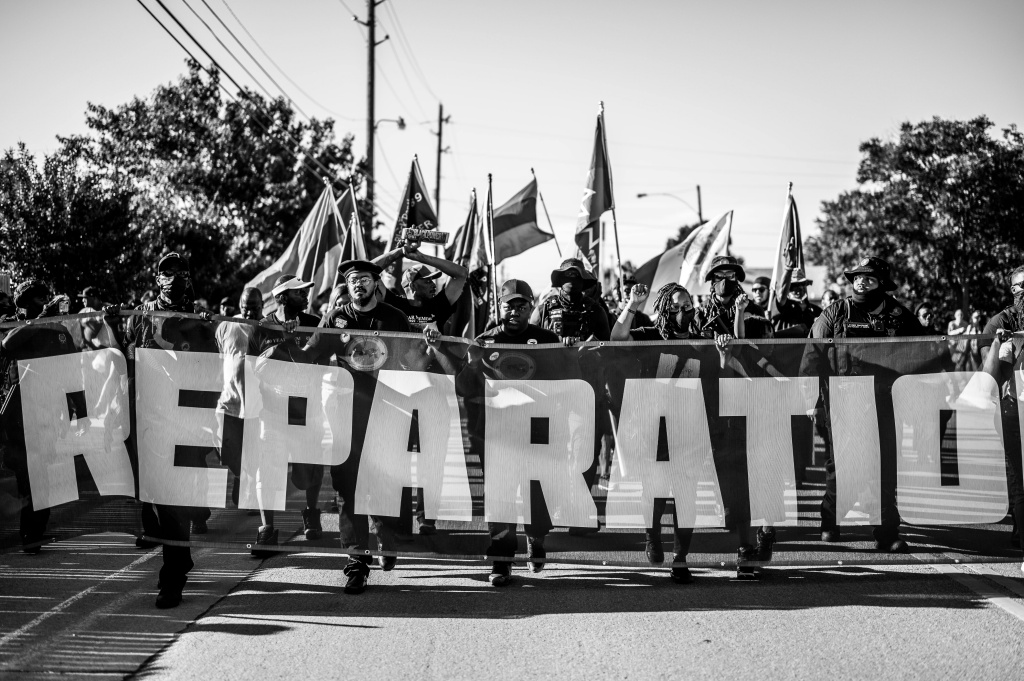




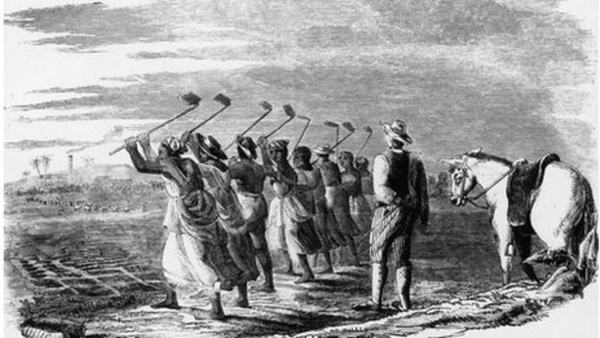
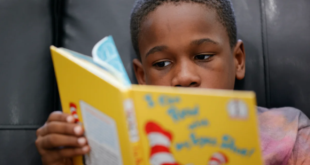
Don’t come for Dr. Claudius Fergus if you don’t have your facts. This man was schooled by the great Rudy Pigott. A great read.
Sometimes it’s not worth the effort to try and explain things to an idiot, however, the rebuttal to that idiot was worth it. Beautifully explained. I’ll like to hear what the numb-skull has to say.
http://crossrhodestt.com/2018/01/20/to-free-the-future/
To read.
Cedric Herring University of Illinois at Chicago Data from the National Survey of Black Americans (NSBA) (1979- 80) are used to examine the effects of skin-tone variations of Blacks ,Indians and others on educational attainment, occupation, and income, net of such antecedent factors as parental socioeconomic status and such contemporaneous factors as sex, region of residence, urban city, age, and marital status.
In his controversial study of the black bourgeoisie, American sociologist E. Franklin Frazier (195 7a) argued that mulattoes, blacks with white progenitors, led a more privileged existence when compared with their “pure black” counterparts. During slavery, these fair-skinned blacks were at times emancipated by their white fathers. After slavery, their kinship ties to whites gave them an advantage over other blacks in obtaining education, higher-status occupations, and property. Because “the majority of prominent Negroes, who were themselves mulattoes, married mulattoes”
The findings are that not only does complexion have significant net effects on stratification outcomes, but it is also a more consequential predictor of occupation and income than such background characteristics as parents’ socioeconomic status. Results are consistent with an interpretation that suggests that the continuing disadvantage that darker blacks experience is due to persisting discrimination against them in our contemporary society
Probably part of the divide and conquer strategy by a minority ruling class.
Love it
WE WUZ KANGS!!!
Why does Baldeosingh insist on making himself look illiterate ♀️ bro do yuh research… Thank you Dr. Fergus for educating the individuals and by extension the population… job well done
I understand the history, its very interesting despite its rambling, but not the context. I did not read baldeosinghs article so i am not sure what the author is responding to. I often do not agree with Baldeosinghs points of view or politics. In futur, i suggest that the author puts a link to the article he is responding to, and note the specific lines as he respondes. I give this article a failing grade, as its written by a professor .
Your response makes no sense in giving a failing grade to Dr. Fergus’s response because he is a lecturer (not a professor). Dr. Fergus is very meticulous in research and referencing.
the world is thirsty for the truth lets start revealing it.
At the end of all the studies…some people just do not like people with the extra melanin….especially those who do not have straight hair….that’s life. So people…love the skin you came in…and love the people whose skin is lighter. If we are interred after death….every one is black…in the grave.
.
.
I’m no historian but if I say my girlfriend is black does that conjure images of a girl with features, of Desha Rambajan, Hema Ramkissoon or Yogit Ramroop?
Looking at Indians in India alone. I stand to be corrected but I don’t think the darker skinned Indians are held in high esteem as compared to their lighter brethren.
And anecdotally, at university I got the impression from the North African students that they did not hold the darker skinned “southern” (Ghana, Nigeria, Zimbabwe, Mozambique) African students as equals.
The above likely applies to how Africans are viewed by the Chinese in China.
Of course always keeping in mind perception vs reality. I am assuming one of the burning issues is how people are perceived as opposed to the reality.
SEA, CSEC, A levels, PISA, SAT, GRE,Nobel Prizes, crime stats and other national development indicators and the like may shed some light on reality.
Excellent response from an academic supreme..
Thank you Dr. Fergus.
It is high time that race be fully discussed in Trinidad and Tobago to put a stop to the fraud perpetuated within the ranks of so-called University Intellect considered as pundits within the UWI, particularly at the St. Augustine Campus in Trinidad & Tobago, who continue to attempt to rewrite the facts of Global History in an attempt to fuel a race from a sub-continent over their superiors from the most profitable, wealthy and largest continent AFRICA, the source of their origin.
The truth will always prevail over those miss-informed, mischief makers who seek racial tribalism and self glorification in their little cocoons.
Again, special thanks to you Dr. Fergus for taking the time to put pen to paper in an attempt to educate and to reprimand the dishonest.
Those perpetrators of the twisted facts or LIES, must learn: “It’s not about race, we are all one family originated from Mother AFRICA.”
Selby I. A. Browne
Thank you Dr. Fergus.
It is high time that race be fully discussed in Trinidad and Tobago to put a stop to the fraud perpetuated within the ranks of so-called University Intellect considered as pundits within the UWI, particularly at the St. Augustine Campus in Trinidad & Tobago, which continues to attempt to rewrite the facts of Global History in an attempt to fuel a race from a sub-continent over their superiors from the most profitable, wealthy and largest continent AFRICA, the source of their origin.
The truth will always prevail over those miss-informed, mischief makers who seek racial tribalism and self glorification in their little cocoons.
Again, special thanks to you Dr. Fergus for taking the time to put pen to paper in an attempt to educate and to reprimand the dishonest.
Those perpetrators of the twisted facts or LIES, must learn: “It’s not about race, we are all one family originated from Mother AFRICA.”
Selby I. A. Browne
http://crossrhodestt.com/2017/12/30/dont-politicize-racialize-issue/
Kudos to Dr Fergus for Bulldozing Baldeosingh’s pseudo history. Kevin has shown a propensity to extract meanings from the past that mirror his own concerns, values and prejudices. One need to look no further than his “Caribbean History for CSEC”. This text co-authored by Radica Mahase and used in schools like Fatima College is nothing short of a vulgar cut and paste from the internet where Kevin and his partner skillfully present discredited information as absolute truths.
Kudos to Dr Fergus for Bulldozing Baldeosingh’s pseudo history. Kevin has shown a propensity to extract snippets of narratives from the past that mirror his own concerns, values and prejudices. One need to look no further than his “Caribbean History for CSEC”. This text co-authored by Radica Mahase and used in schools like Fatima College is nothing short of a vulgar cut and paste from the internet where Kevin and his partner skillfully present discredited information as absolute truths.
I always meant to go through that book
Thank you eh.
I was going to inform this gathering that That person writes textbooks, bought and used by children. And he is not rare. Plenty charlatans writing material for the nation’s children
What book is this.
Maven Huggins fake news…one time he wrote an article that rapists and child molesters were in a majority in the EW corridor where majority is christian
mind you the national stats say otherwise
Hogwash
I think I also have to reread (perhaps three times) Baldeo’s article and the rebuttal by Ferguson..
Fraud Racist are all terms I call him, because he seeks to divide us as a nation and feel when he wraps it up in nonfactual Rhetoric with a set of underlying snide remarks makes it a great story, only for the uneducated and what I call Sat followers….
Love your analysis of Baldeosingh’s writing… so true
!
He has a serious inferiority complex that shows in his writing. Begs the question that if he wonders by forwarding this narrative he will be granted honorary lighter hued status.
H Williams take a read
I really want to understand this article.. I read it and I guess.. I have to read it again..
Baldeosingh is a cynical critic wannabe Naipaul but Naipaul.sticks to almost semihumorous travelogue with a style of his own and he is brutally honest. Kevin does not understand the science of religion so he calls.himself an atheist based on the practice of religions. He ,like Sat Maharaj do not understand India and even the philosophy of Hinduism. India is home to Dravidians, Parsis, Africans, Chinese,Anglos,Gypsies,Nagas….and the darker South Indian has excelled more socially, spiritually and academically than the lighter skinned Northern people.
Nice. When I tell people that India was once part of the Egyptian empire they usually look at me in disbelief.
U can’t say one was part of the other really…both are the remnants or tributaries from the same mighty river.
Shiva Basdeo Cool. Thanks.
Can you say when? Because I have never seen any records of that!
Would it be so bad if it were true? Egypt was once a mighty empire… Is it so terrible to be a part of such might?
Veno Balgobin Will get back to on the dynastic period.
Well considering that the harappan civilization was twice the size of the combined area of the fertile crescent AND egptian civilizations,… so yeah
Hmmm….i haven’t observed a comment section that made so much sense in a while…thanks guys…
Debbie we try by providing good food for thought to start the convo. Thanks.
Veno Balgobin how about you do some research ?…
From the book, Africa Mother of Western Civilization, by Dr. Yosef A. A. ben-jochannan, pp 392 & 393: “In 1900 B.C.E., (Before the Christian Era} during the XII th Dynasty (2000-1785 B.C.E.) Pharaoh Securset I st conquered the coastline of India up to, and beyond, the Ganges River and to the Eastern Ocean ( Indus or Indian Ocean). There in India, he left thousands of indigenous Africans soldiers, just as General Ganges ( The Ethiopian for whom this river was named ) did.”
Kevin is just an intellectual poser, wanted to say fraud, but I won’t call the man a fraud. Calling Kevin a fraud i won’t do.
Licks indeed. Excellent read.
Hahaha. before you publish, your paper must be peer reviewed. …shade!
It is nice to see someone calling out Baldeosingh on his racist views. He has been espousing this foolishness for close to 20 years.
A few points to clarify with what Dr Fergus says, but I think he wiped the floor with KB from the references given.
excellent read!!
Baldeosingh gives many amateurs hope to become a professional writer
Guess the cliche applies “You are entitled to your own opinions, not your own facts.” I have not read enough to render an informed discussion.
Mr. Baldeosingh you got served!
Won’t make any difference to him; he’s one of those who only values his own points of view.
He gets rebutted all the time his standing as an intellectual is a myth
sadly disappointed in his skill!
Why?
He was Ever called an intellectual?
Then again, this is trinidad
Thanks for sharing Lasana. Very informative. This is history. This is deep. I have learnt so much in this article which taught me how much I don’t know about myself, my country my descendants, particularl since i am of East Indians and African descent. will go back to the first article. Didn’t do history at Campus, but heard . Dr Fergus,as speaker in some Seminars, Very articulate and knowledgeable.Social media has provided a platform where so many people talk and write about things they don’t know about, which is dangerous for the curious person, who may believe them. hmmmmmmmm
I learned plenty myself.
Dr. Fergus is great. He was my A Level History teacher in NEC
There isn’t much for me to add here. Dr Fergus handled it as I knew he would. Although Baldeosingh’s views on religion and mine are almost identical, I have long since dismissed him as someone to be taken seriously. His citing of Snowden basically confirmed for me that dismissal. Dr. Fergus raised some of the same points I raised in my initial response plus the article I wrote yesterday responding to Dool Hanomansingh and more so, Dr Kumar Mahabir.
You should share that post in this thread A Corey Gilkes.
Not sure which post you specifically referring to Lasana Liburd, so I’ll post both the response and the link to the blog i wrote yesterday (warning, the post long and the blog longer 😉 )
******************************
this type of thing is typical of Baldeosingh: find what agrees with your preconceived notions and cite it to legitimise your stance. Examine the source of the source? No, for what?
Today we have Morgan Job, Henry Louis Gates (ok, and Ben Carson). A few years prior (in economics) we had Thomas Sowell. In the 1940s and 50s we had Frank Snowden. Every generation has “acceptable negroes”. Snowden denied the Africanness of the ancient Egyptians as does the likes of Baldeosingh. Snowden was called out on that by a number of scholars including the late Jacob Carruthers who pointed out in his book “Intellectual Warfare” that by Snowden’s own categorising, *he* would have been considered a “non-black”, but google an image of Snowden and see what stares back at you.
Notice how Baldeosingh makes no mention of Cheikh Anta Diop or his associate (who is still alive) Theophile Obenga and their historic 1974 debate against a cadre of historians and Egyptologists on the ethnicity of the ancient Egyptians. Notice there is no mention of the Papyrus of Hunefer, a document written by the Egyptians, that says that “we came from the beginnings of the Nile…in the foothills of the mountains of the Moon (i.e. the Kilimanjaro and Ruwenzori mountains where the Nile begins)….I guess black people cannot be relied upon to speak the truth about themselves…..but what do we have to say about the reliability of Herodotus?
It’s beyond disgusting that in 2017 we still have people like Baldeosingh willing to go along with the European/Euro-American imperative to separate ancient Egypt from the rest of Africa.
Re Islam
There is no one history of how Islam was spread across Africa; much of it was indeed violent as Chancellor James Willaims and Mahmoud Mamdani’s works attest. But there is also a history that points to Islam in West Africa was spread by islamised Africans who left the ancient matri-axial customs alone (unlike East Africa where Islam was spread more by Arabs); one only has to read ibn Battuta’s book and note his shocked observations of devout Muslim West African women dressed “revealingly” and conducting independent business, veto power in political affairs and other things some East African and certain Bedouin women could not do. That quote he cited from Dr Parker alludes to this.
As for Haiti, even I am struggling to understand what was his point. Whites were massacred yes (and rightly so), but other whites were not, an entire contingent of whites from Poland who fought on their side were made Haitian citizens. Perhaps he may want to confer with Prof Bayinnah Bello who is Haitian.
************************************************
https://coreygilkes.wordpress.com/2017/12/29/yes-let-indeed-talk-about-race-dr-mahabir/
Anyone who use ‘balderdash’ mek mih want to read. Got to study this as I haven’t been following the debate. thanks
All the related stories are at the bottom of the article in “Suggested Reads”
What’s the point of all this ‘intellectual exchange’? It does not in any way add value to my current existence.
Maybe for you. I learned plenty new stuff about global history myself.